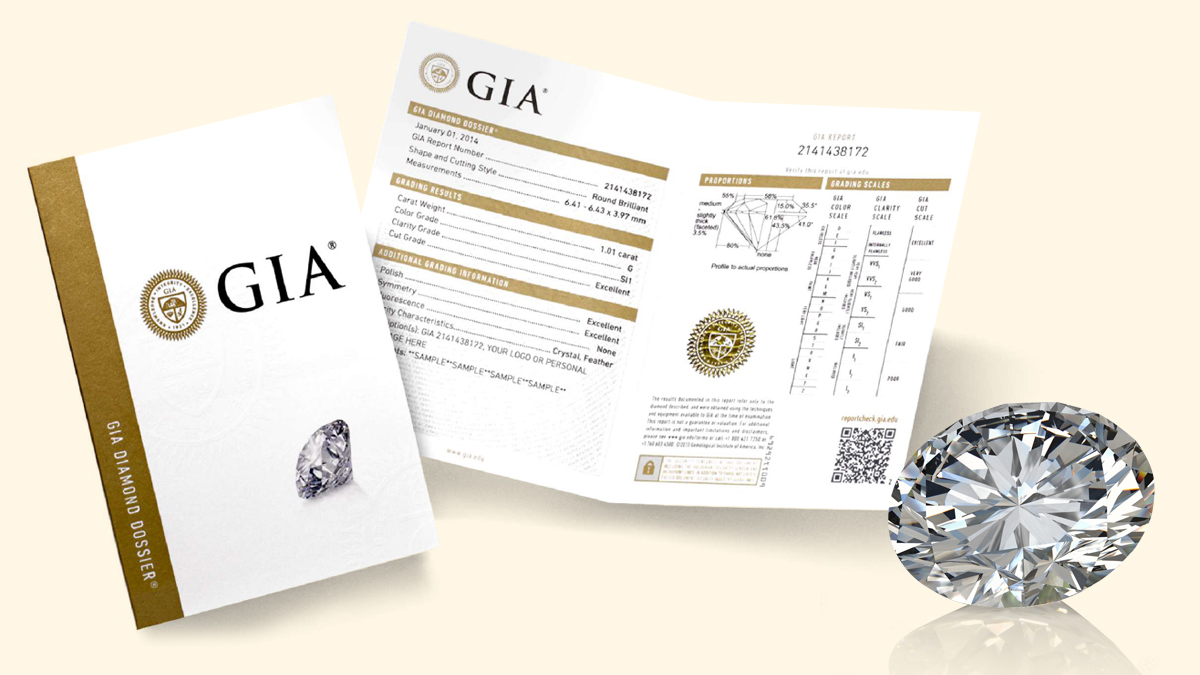When you go to buy a diamond, you have two choices. The first is the classic and traditional diamond known as mined diamonds, while the second is a recent development in the diamond industry known as lab grown diamonds. It is important to understand that lab grown diamonds are different from diamond simulants such as cubic zirconia. Whereas the cubic zirconia looks like a diamond, but it is not a diamond. Although lab grown diamonds are the real diamonds created in a laboratory with the aid of cutting-edge technology, they have the same advantages as their natural counterparts but are around 30–40% less expensive. Lab grown diamond also known as lab created diamond and man-made diamond, they are the same chemically as a natural diamond, they also come with diamond certification.
A number of internationally recognized laboratories, including the American Gem Society (AGS), Antwerp World Diamond Centre (AWDC), International Gemological Institute (IGI), Gemological Institute of America (GIA), Gem Certification and Assurance Lab (GCAL), and Gemological Science International (GSI), offer certifications for lab created diamonds. When issuing diamond certificates, all of these laboratories follow the same rules for grading scales and evaluation. Make sure you always receive a certificate from the top international grading lab when you buy lab-grown diamond engagement ring or other jewelry to confirm the details about the diamond are accurate.
What Is Diamond Certification?
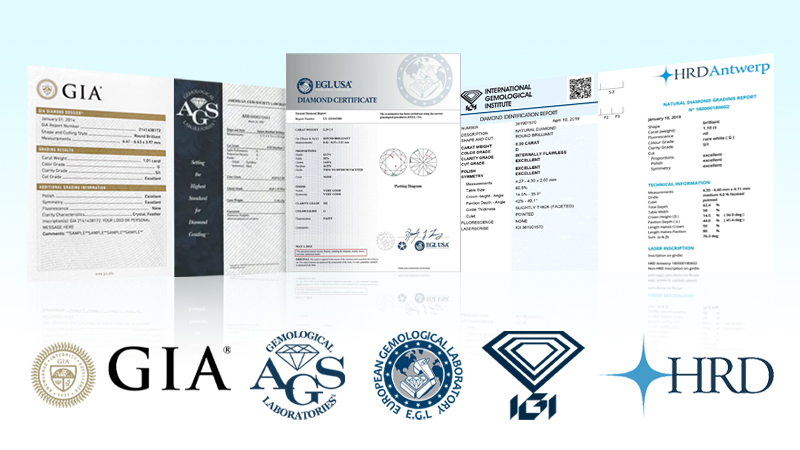
Diamond certification is referred to as the testing and evaluation of diamonds by a licensed, internationally recognized laboratory. It contains information about a diamond's characteristics, such as its color grade, carat weight, clarity grade, and cut grade. Without a diamond certificate, you should never purchase a diamond. The American Gem Society (AGS), the Gemological Institute of America (GIA), and the International Gemological Institute (IGI) are the most well-known grading facilities. The 4Cs Cut, Carat Color and Clarity, are the independent factors that determine a diamond's price. The relationship between these four features affects a diamond's cost.
The Four Cs of Diamond Grading
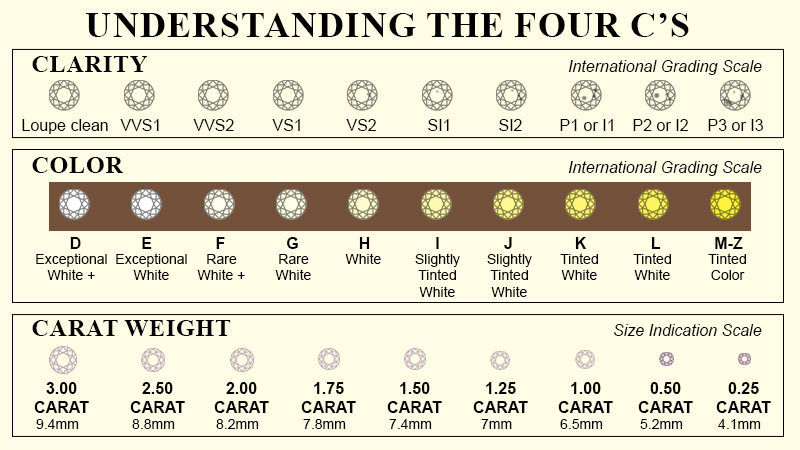
Your diamond will be graded in the same manner whether it is natural, or lab grown diamond. The 4Cs of a diamond—Cut, Clarity, Color, and Carat—are used in the grading process. As previously said, each diamond is graded, examined, and authenticated by the appropriate lab by a gemologist. A diamond may go through multiple gradings to receive the right grade and certificate. A report containing all the information about the diamond is created from the individual findings of individual gems. What are the four Cs, and what qualities should a diamond have?
Cut
The diamond's cut refers to how well-balanced its dimensions are and how these surfaces, or facets, are arranged to produce shine. Although it is unrelated to the diamond's shape, cut also refers to how well-proportioned the diamond is. Diamonds can be physically cut into a wide variety of shapes, but in the grading process, the "cut" of the diamond has a distinct meaning. A well-cut diamond will sparkle and shine with constant, proportionate brilliance throughout. A diamond with poor cutting will be dull and could lack fire and sparkle. There is a four different cut grades Ideal, very good, good, and excellent.
Color
Diamonds are graded by the GIA on a scale from D (colorless) to Z (light color). Despite having various amounts of color, all D-Z diamonds are regarded as being white. True fancy-colored diamonds (yellows, pinks, and blues, for example) are graded using a different color grading system. Since the naked eye is used to grade diamond colors, color is logically one of your main concerns when purchasing a diamond.
Clarity
The presence of small flaws and inclusions in a diamond naturally determines its clarity. Diamonds with minimal to no inclusions are exceptionally rare and expensive. If a diamond is given the highest clarity grade possible, "internally flawless - IF," it is more valuable than diamonds with lower clarity grades. Diamonds in the VVS1–VS2 range are clean to the naked eye, meaning that you cannot see any inclusions without specialized tools. Then, stones with SI1 and SI2 grading are normally eye-clean, although depending on the type and location of the inclusions, some can be detected without any magnification or specialized tools.
Carat
The unit of measurement used to describe a diamond's weight is called a carat, although it can give you a broad indication of a diamond's size. Diamonds are weighed to the fifth decimal place by a very accurate electronic micro-balance machine used by grading organizations to determine carat. When analyzing diamonds, it is frequently the most obvious feature at first glance.
GIA Lab-Grown Diamond Grading Reports
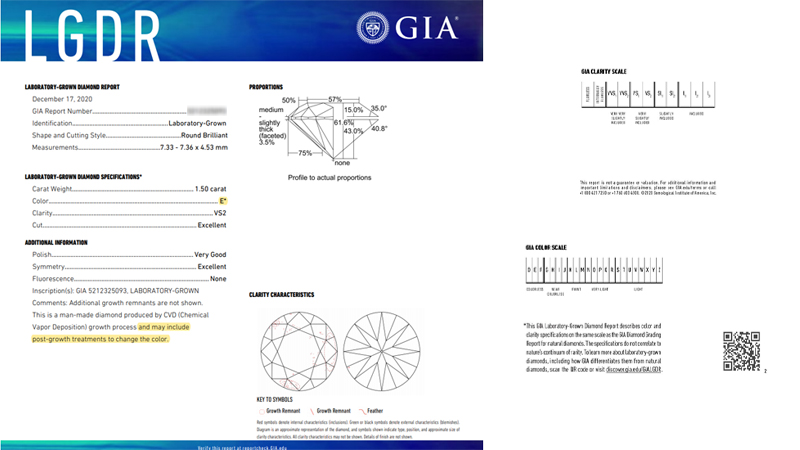
The most reputable diamond grading laboratory, although there are still very few GIA certified lab diamonds available. Lab created diamonds are now being completely graded by the GIA, although they are much harder to find. The GIA grades both lab created and natural diamonds. The only versions of the GIA reports for lab grown diamond that are available are digital. GIA grade them according to the four Cs, the main distinction between GIA diamond grading reports for lab-grown diamonds and other diamonds is that the latter state the diamond's origin as laboratory-grown and note in comments whether it was created using CVD (Chemical Vapour Deposition) or HPHT (High Pressure High Temperature).
Here is a sample GIA lab grown diamond grading report:
IGI Lab-Grown Diamond Grading Reports
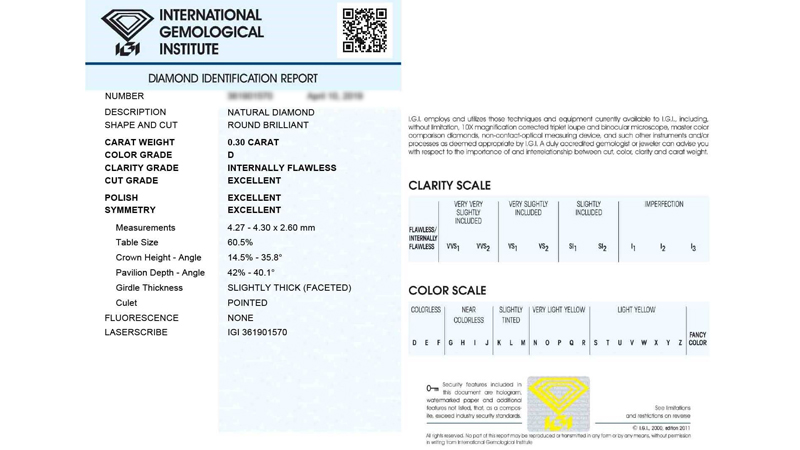
IGI is an independent organization that certifies precious metals, fine jewelry, and gemstones like diamonds, including those made in laboratories. It rose to become the most well-liked gem laboratory for significant jewelry retailers in Canada and the United State.
This independent organization, founded in 1975, has established a presence in numerous places throughout the world. Belgium's Antwerp serves as its corporate headquarters. The IGI is recognized across the world for providing accurate igi certified diamond grading reports. The buyer is made aware that the diamond was formed in a laboratory by an IGI Laboratory Grown Diamond Report, which offers the same information as an earth-grown diamond grading report.
AGS Lab-Grown Diamond Grading Reports
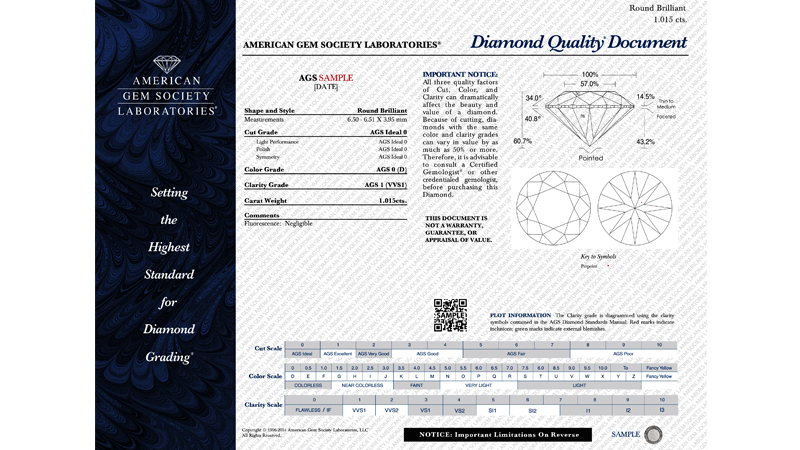
Since its founding in 1934, AGS has expanded to include about 3,400 jewelers and other jewelry-related businesses. In 1996, AGS started providing diamond grading services. Today, the AGS offers gemological expertise, research, consumer protection, and uniform diamond grading to merchants, jewelers, and people. The AGS is one of the most reputable lab grading organizations in the world thanks to its clear and consistent grading.
Each diamond is assessed by the AGS based on its characteristics. It generates a grading report with information on the cut quality, carat weight, and other factors. Examine every detail in an AGS diamond grading report to make sure you're purchasing what you thought you were.
GCAL Lab-Grown Diamond Grading Reports
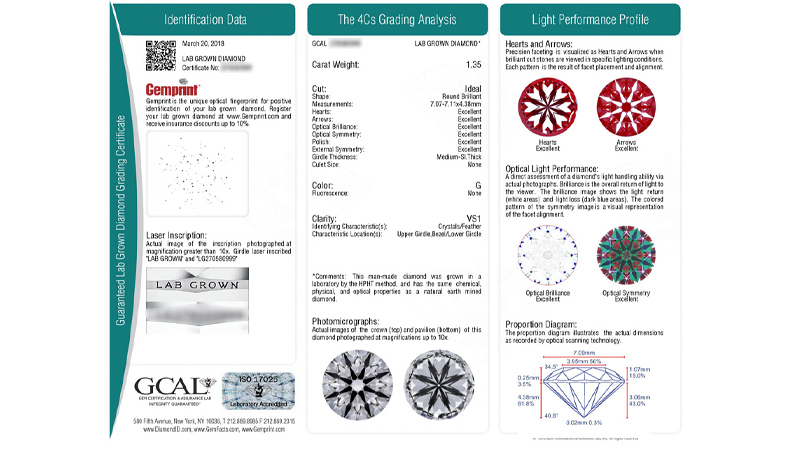
The Gem Certification & Assurance Lab (GCAL) offers a variety of services for the gem and jewelry industry, such as grading and certification of natural diamonds, lab-grown (synthetic) diamonds, diamond cut analysis, identification of colored stones and pearls, precious metals analysis, as well as video and photography. GCAL also conducts appraisals and provides reports and valuations for diamond jewelry. GCAL warrants that each diamond meets the grades and measurements noted in the GIA or AGSL grading report, within recognized gemological tolerances. These reports stand out because they include both an optical symmetry analysis and an optical brightness analysis. By giving customers precise information about their diamonds and gemstones, GCAL aims to protect consumers from fraud.
Donald Palmeiri established GCAL in 2001, and it only has one location, at 580 Fifth Avenue in New York. The lab has ISO 17025 certification, which is a widely recognized international quality management system. Achieving ISO accreditation is a noteworthy accomplishment for any company.
Conclusion
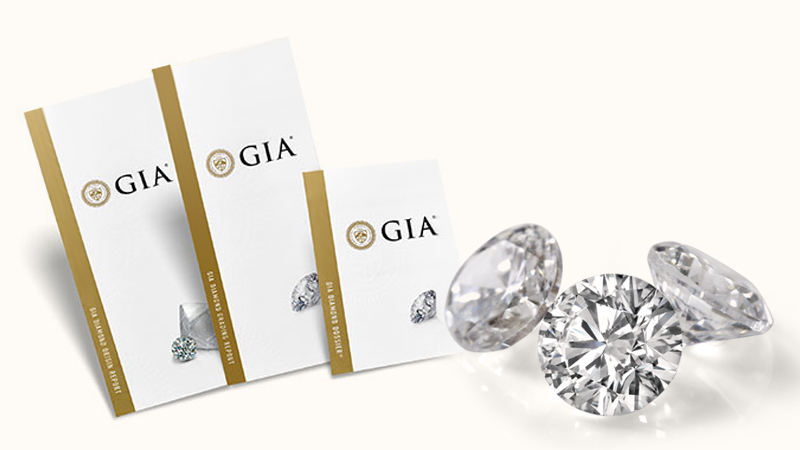
Yes, just like natural diamonds, lab-grown diamonds will include a certificate. IGI is the bigger grading organization, and it has labs all throughout the world. IGI has consistently been reliable for us while continuing to raise its grading criteria. A grading will give a lab report or certificate that lists the dimensions, color, clarity, length, and width of the diamond. Using specialized equipment like a loupe or microscope, trained specialists analyze, inspect, and measure the diamonds. IGI certificate is an indicator of quality and authenticity. GCAL is a relatively small grading organization but is recognized as reliable and consistent. However, it is vital to purchase only those diamonds certified by the best grading labs.

